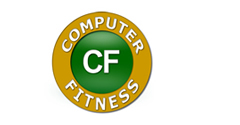According to a recent Tweet from Matt Cutts, Google has released their biggest spam report form refresh in roughly ten years. Along with their own attempts Google also relies on individual users to help combat websites that are spamming their index. As a part of Google’s continuous effort to improve the quality of search results, they ask that you submit a spam report if you come across a site that isn’t following the webmaster guidelines or acceptable practices. Google users can submit spam reports using their Webmaster Tools. 
The previous spam report form was only a single page and had simple check boxes for users to identify the type of spam that was encountered. The new spam center however has a main page that provides a user with 8 different links. Each of the 8 links is for a different type of spam. The links include paid links, objectionable content, malware, other Google products, copyright, legal issues, personal/private, phishing, and other. These links will each direct a user to a separate spam complaint section where the user can then report the web address and express their concerns in full details.
Google depends on their “webmaster quality guidelines” as well as these detailed spam reports to help them generate scalable spam solutions. Instead of struggling against spam one by one they are always seeking new information to enhance their algorithm and combat large bodies of spam. Google’s quality guidelines express the various forms of deceptive or manipulative behaviors and describe how websites can avoid the misleading practices. The basic quality guidelines established by Google are as follows:
- Design pages for users, not for the search engines. Don’t deceive your users or present different content to search engines than you display to users (cloaking).
- Don’t use tricks that are intended to improve search engine rankings. A good rule of thumb is whether you’d feel comfortable explaining what you’ve done to a website that competes with you. Another useful test is to ask, “Does this help my users? Would I do this if search engines didn’t exist?”
- Don’t participate in link schemes designed to increase your site’s ranking or PageRank. In particular, avoid links to web spammers or “bad neighborhoods” on the web, as your own ranking may be affected adversely by those links.
- Don’t use unauthorized computer programs to submit pages, check rankings, etc. Such programs consume computing resources and violate our Terms of Service. Google does not recommend the use of products that send automatic or programmatic queries to Google.
- Avoid hidden text or hidden links.
- Don’t use cloaking or sneaky redirects.
- Don’t send automated queries to Google.
- Don’t create multiple pages, subdomains, or domains with substantially duplicate content.
- Don’t create pages with malicious behavior, such as phishing or installing viruses, trojans, or other badware.
- Avoid “doorway” pages created just for search engines, or other “cookie cutter” approaches such as affiliate programs with little or no original content.
- If your site participates in an affiliate program, make sure that your site adds value. Provide unique and relevant content that gives users a reason to visit your site first.
These are only the basic quality guidelines. In order to prevent your site from being flagged by Google it’s advised that you follow the mentioned suggestions as well as the rest of the Webmaster Guidelines. If your website does fail to comply with Google’s requests then you should make the necessary adjustments and resubmit your website.
To compare the new and old spam report forms visit SearchEngineLand.com
Thanks for Reading and Have a Great Day!
Dustin








